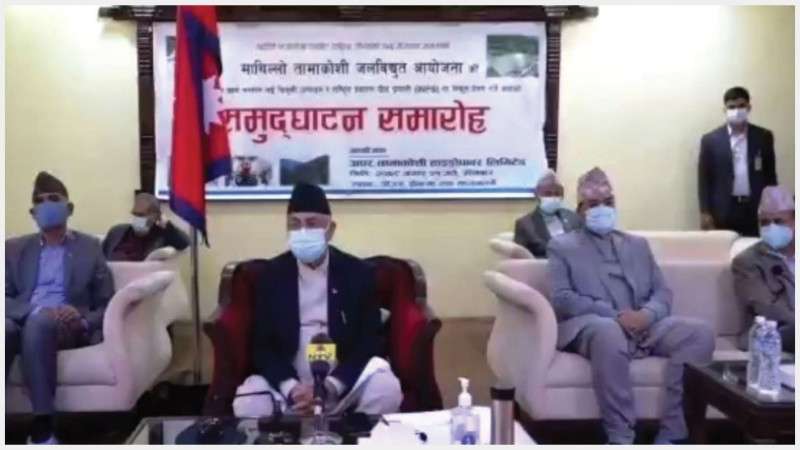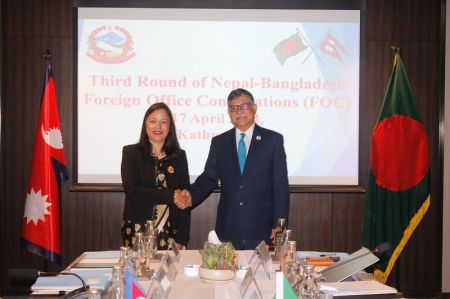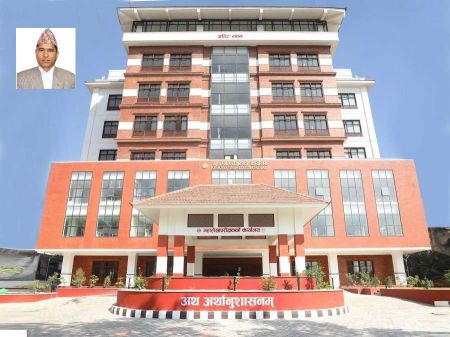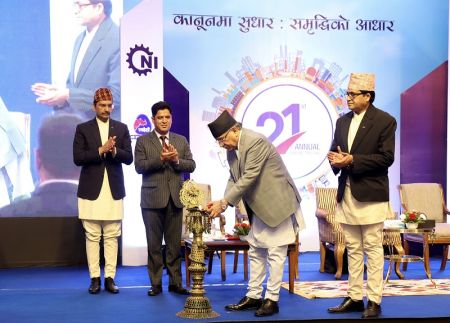July 6: The Upper Tamakoshi Hydropower Project has finally come into operation from Monday after various ups and downs. The project has started generating electricity from a unit with a capacity of 76 MW from Monday.
The construction of the 456 Megawatt project began in 2008. The then Prime Minister Jhala Nath Khanal had laid the foundation stone of the project on June 19, 2008.
On Monday (July 5), Prime Minister KP Sharma Oli inaugurated the project amid a formal function. He inaugurated the Dolakha-based project virtually from Kathmandu. Finance Minister Bishnu Prasad Poudel, representatives of the Nepal Electricity Authority, and project officials were also present at the inauguration.
Inaugurating the project, Prime Minister Oli said it's a matter of pride for the country to have such a big project with domestic investment. He said that the project has boosted the confidence of the nation.
Minister for Energy Poudel said that the project built with domestic investment would be a great achievement for the country's economy. He said that there will be no recurrence of load shedding in Nepal due to the project.
Nepal Electricity Authority Executive Director Hitendra Dev Shakya said the project would generate 228 million units of electricity annually. The project, built with domestic investment, was targeted to be operational by 2016. However, the project could not come into operation on time due to disputes, the poor performance of the construction company, and natural calamities.
The project came into operation almost five years after the deadline. The construction work has been delayed due to the poor performance of the construction company. The 2015 earthquake badly affected the construction of the project. The project was also affected by the Indian blockade after the earthquake.
The project was delayed due to problems in transportation of fuel and construction materials due to Madhesh movement and blockade, change in the design of the project, delay in work by hydromechanical (Lot 2) contractors under various pretexts.
The project was targeted to be operational within the last fiscal year. However, the construction of the project was again affected by the pandemic.
In particular, the Austrian contractor of Electromechanical (Lot 3) under the tripartite agreement (Project, Texmaco, and Andrews) agreed to install penstock pipes in the 373-meter-long vertical tunnel, which was considered difficult after the Indian company Texma's Railway Engineering delayed the work.
The work gained momentum after Andrews was given the task of connecting the penstock to the lower vertical tunnel.
The cost of the project has skyrocketed as the construction work of the project has been extended. The target was to complete the construction of the project for Rs 35 billion. However, Rs 84 billion has been spent on the project.
The project has a net cost of Rs 52 billion and Rs 32 billion for interest. Investment is also said to have increased due to fluctuations in the value of the US dollar.
The project has 6 units of 76 MW capacity each. The first unit of the project has been brought into operation from Monday for test production. The remaining five units will also be brought into operation every two weeks, said Bijan Prasad Shrestha, chief executive officer of the project. He said that all the units will come into operation in August as per the schedule.






















